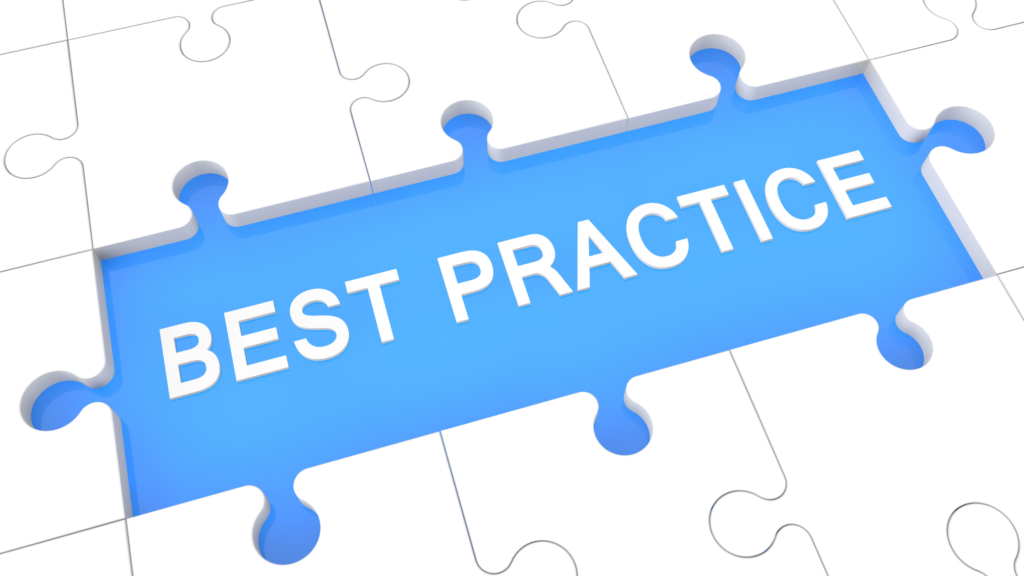
User Story
A user story is a concise, written description of a feature or functionality from an end user's perspective. It serves as a...


When implementing Scrum, it is essential to establish clear and specific goals that provide a clear direction and purpose for the project. Clear goals help the Scrum team understand what they need to achieve and why it is important. Take the time to define goals that are specific, measurable, achievable, relevant, and time-bound (SMART). For example, instead of setting a generic goal to “improve customer satisfaction,” define a specific target, such as “increase customer satisfaction ratings by 10% within the next quarter.”
Effective communication of goals is crucial to align the entire Scrum team. Clearly communicate the goals, their rationale, and the expected outcomes to all team members. This helps create a shared understanding and a sense of ownership among the team. Utilize various communication channels, such as team meetings, workshops, and documentation, to ensure that the goals are effectively conveyed. Encourage open dialogue, provide context, and address any questions or concerns that arise.
In addition to internal communication, it is essential to align the project goals with the expectations and needs of stakeholders. Engage with stakeholders early on to understand their requirements and ensure that the goals are in line with their expectations. By involving stakeholders in the goal-setting process, you foster collaboration, gain their support, and increase the chances of delivering value that meets their needs. Regularly update stakeholders on the progress towards the goals and seek their feedback to maintain alignment throughout the project.
Goals should not be set in stone but should be continuously evaluated and refined. Regularly assess the progress towards the goals and gather feedback from stakeholders and the Scrum team. If circumstances change or new insights emerge, be open to adjusting the goals to ensure their relevance and alignment with the project’s purpose. Embrace an iterative approach, conduct regular reviews, and make data-driven decisions to refine the goals as needed. By continuously evaluating and refining the goals, you increase the project’s adaptability and enhance its chances of success.
Once you have established clear and specific goals, it is important to break them down into manageable objectives. Objectives are smaller, actionable steps that contribute to the achievement of larger goals. Breaking down goals into objectives helps create a roadmap for the Scrum team, allowing them to understand the specific tasks and milestones required to reach the goals. Each objective should be measurable and have a clear definition of success. Assign objectives to team members based on their skills and expertise, fostering a sense of ownership and accountability.
Not all goals and objectives are of equal importance. It is crucial to prioritize them based on their impact and value to the project and stakeholders. Prioritization allows the Scrum team to focus their efforts on the most critical aspects, ensuring that resources are allocated effectively. Collaborate with stakeholders to understand their priorities and consider the project’s constraints and dependencies when determining the order of goals and objectives. Regularly reassess and adjust priorities as needed to reflect changing circumstances.
To ensure clarity and alignment, document the goals and objectives in a visible and accessible manner. Create a shared repository or project management tool where the goals and objectives can be documented and easily accessed by the Scrum team and stakeholders. This documentation serves as a reference point for everyone involved, helping to maintain focus and provide a common understanding. Regularly communicate updates and progress on the goals and objectives to keep all stakeholders informed and engaged.
As you define and refine your goals, it is important to review and align them with the principles and practices of the Scrum framework. Ensure that your goals are compatible with the iterative and incremental nature of Scrum, allowing for frequent feedback and adjustments. Align the goals with Scrum artifacts such as the product backlog, sprint backlog, and potentially shippable increment. Regularly review and refine the goals in collaboration with the Scrum team to maintain their relevance and alignment with Scrum practices.

One of the key principles of Scrum is cross-functional collaboration. Encourage collaboration and communication among team members with different skills and expertise. Foster an environment where individuals feel comfortable sharing their ideas, knowledge, and perspectives. Facilitate regular interactions and collaboration sessions to promote cross-functional learning and problem-solving. By leveraging the collective intelligence and diverse skills of the team, you can enhance creativity, innovation, and efficiency in achieving the goals.
Empowerment is crucial for a successful Scrum implementation. Trust the expertise and capabilities of the Scrum team members, and empower them to make decisions and take ownership of their work. Provide autonomy and encourage self-organization, allowing the team to determine the best approach to achieving the goals. Support the team by removing obstacles and providing the necessary resources and support. Empowered teams are more motivated, engaged, and capable of delivering high-quality results.
Collaboration with stakeholders is essential for project success. Involve stakeholders in the Scrum process and encourage their active participation. Engage them in regular feedback sessions, sprint reviews, and demos to gather their input and validate the progress. Foster a collaborative relationship with stakeholders, involving them in decision-making and prioritization. By actively involving stakeholders, you increase their sense of ownership, build trust, and ensure that the delivered product meets their expectations.

To implement Scrum effectively, it is crucial to adopt the Scrum framework in its entirety. Embrace the core elements of Scrum, including the roles of Scrum Master, Product Owner, and Development Team, as well as the ceremonies of Sprint Planning, Daily Stand-ups, Sprint Reviews, and Retrospectives. By adhering to the Scrum framework, you create a structured and predictable process that supports iterative development and continuous improvement.
Scrum is based on an iterative development approach, where work is divided into short, time-boxed iterations known as Sprints. Encourage the Scrum team to embrace this iterative approach by delivering increments of working software at the end of each Sprint. Break down work into manageable user stories or tasks, and prioritize them based on value and dependencies. By delivering working software regularly, you can gather feedback, validate assumptions, and make timely adjustments to the product.
Continuous improvement is at the heart of Scrum. Encourage the Scrum team to reflect on their processes, practices, and interactions during regular retrospectives. Identify areas for improvement and take actions to address them in subsequent Sprints. Foster a culture of learning and experimentation, where team members feel empowered to propose and implement changes that enhance productivity and quality. By embracing continuous improvement, you can adapt and optimize your processes to deliver better results over time.
Scrum is designed to be flexible and adaptable to change. Encourage the Scrum team to embrace change and respond to new requirements or insights that emerge during the project. Prioritize adaptability over rigid adherence to initial plans, and be open to reprioritizing work or adjusting goals based on changing circumstances. Foster a mindset of agility and responsiveness, allowing the team to embrace change as a source of opportunity and innovation.

Transparency is a fundamental principle of Scrum. Foster a culture where work processes, progress, and challenges are transparent to all stakeholders. Maintain a visible and up-to-date product backlog that reflects the priorities and status of work items. Utilize visual management tools, such as Scrum boards or Kanban boards, to provide real-time visibility into the progress of tasks. Encourage regular communication and information sharing among team members, stakeholders, and management to ensure everyone is well-informed about the project’s status.
Effective communication is crucial for successful Scrum implementation. Encourage open and frequent communication within the Scrum team and with stakeholders. Facilitate daily stand-up meetings where team members share updates, discuss challenges, and coordinate their work. Conduct regular sprint reviews and retrospectives to gather feedback and insights from stakeholders and the team. Utilize communication tools and platforms that facilitate real-time collaboration, such as project management software or team messaging platforms.
Decision-making within the Scrum team should be collaborative and involve all relevant stakeholders. Encourage team members to share their ideas, insights, and concerns during planning sessions and retrospectives. Foster a culture where decisions are made based on consensus and collective agreement. Involve stakeholders in the decision-making process to ensure their perspectives are considered, promoting ownership and alignment among all involved parties.
Feedback is essential for continuous improvement and effective decision-making. Establish feedback loops at various stages of the Scrum process. Encourage regular feedback from stakeholders during sprint reviews and demos to validate the product’s direction and gather insights for future iterations. Facilitate feedback from team members during retrospectives to identify areas for improvement in processes, collaboration, and individual contributions. By establishing feedback loops, you create opportunities for learning, adjustment, and optimization.

Creating a collaborative team environment is essential for successful Scrum implementation. Encourage a culture of trust, respect, and open communication among team members. Foster an environment where individuals feel comfortable sharing their ideas, concerns, and challenges. Promote teamwork and collaboration through team-building activities, cross-functional training, and shared responsibility for project success. By fostering a collaborative team environment, you enhance productivity, creativity, and the overall effectiveness of the Scrum team.
The daily stand-up meeting, or daily scrum, is a crucial ceremony in Scrum. Ensure that the stand-up meetings are effective and focused on the right topics. Set clear expectations for team members to share their progress, highlight any impediments, and communicate their plans for the day. Keep the meeting time-boxed and encourage concise updates from each team member. The daily stand-up serves as a forum to synchronize efforts, identify and address obstacles, and foster collaboration within the Scrum team.
Scrum emphasizes cross-functional collaboration, where team members with different skills and expertise work together towards a common goal. Encourage team members to share their knowledge, skills, and experiences with others. Foster an environment where individuals are willing to step outside their comfort zones and support each other in achieving the project objectives. Cross-functional collaboration enhances problem-solving, reduces dependencies, and allows for a more holistic approach to delivering value.
Scrum teams are self-organizing, meaning they have the autonomy to decide how to accomplish their work. Encourage team members to take ownership of their tasks, make decisions collectively, and self-manage their work. Provide the necessary support, resources, and guidance while empowering them to make informed choices. Empowering self-organizing teams promotes creativity, accountability, and a sense of ownership, resulting in higher motivation and productivity.
Sprint reviews and retrospectives are essential ceremonies in Scrum that facilitate continuous improvement. Conduct sprint reviews at the end of each sprint to showcase the delivered product increment to stakeholders and gather their feedback. Use this feedback to validate the direction of the project and make necessary adjustments. Retrospectives, on the other hand, provide an opportunity for the Scrum team to reflect on the sprint and identify strengths, areas for improvement, and actionable steps for the next sprint. Conduct these ceremonies in a structured and collaborative manner, encouraging open and honest communication among team members and stakeholders.
Scrum is based on the agile mindset, which values adaptability, collaboration, and continuous improvement. Embrace this mindset within the Scrum team and foster a culture of agility. Encourage individuals to be open to change, to embrace feedback and new insights, and to be proactive in finding innovative solutions. Foster a culture where failure is seen as an opportunity to learn and iterate. By embracing an agile mindset, the team becomes more resilient, responsive, and capable of adapting to evolving project requirements and challenges.
In an ever-changing business environment, it is important to remain flexible and adapt goals and priorities as needed. Regularly reassess the project goals and priorities based on stakeholder feedback, market dynamics, and emerging opportunities or risks. Be willing to reprioritize work, adjust sprint backlogs, and realign the team’s efforts to ensure that the most valuable and relevant work is being pursued. Adaptability is a key aspect of Scrum and enables the team to deliver value even in the face of uncertainty and changing circumstances.
Effective product backlog management is crucial for maximizing the value delivered by the Scrum team. Prioritize backlog items based on their value to the customer or end-user. Collaborate with stakeholders to understand their needs, gather feedback, and determine the most valuable features or functionalities. Apply techniques such as user story mapping or impact mapping to prioritize backlog items in a way that aligns with the project goals and customer expectations. By focusing on delivering high-value items first, you ensure that the most critical needs are addressed early in the development process.
User stories are an important part of the product backlog, representing the desired functionality from the user’s perspective. When creating user stories, ensure they are appropriately sized and granular. Avoid overly large or vague user stories that may lead to uncertainty or delays in implementation. Break down user stories into smaller, manageable tasks that can be completed within a single sprint. This allows for better estimation, tracking, and progress visibility. Use techniques like user story slicing or story mapping to break down complex user stories into smaller, actionable items.
The Product Owner plays a critical role in Scrum, representing the stakeholders and ensuring the product’s success. Collaborate closely with the Product Owner to understand their vision, gather requirements, and align on priorities. Regularly communicate with the Product Owner to clarify expectations, discuss changes, and address any concerns. Foster a collaborative relationship based on trust and mutual understanding to ensure that the product backlog accurately reflects the needs and goals of the stakeholders.
The product backlog is a dynamic artifact that evolves throughout the project. Continuously refine and adapt the backlog based on feedback, changes in requirements, and new insights. Regularly review and reprioritize backlog items to ensure that they align with the project’s goals and current market conditions. Seek feedback from stakeholders and the Scrum team to validate assumptions and identify opportunities for improvement. By continuously refining and adapting the product backlog, you keep it relevant, responsive, and reflective of the evolving project needs.

Effective collaboration with stakeholders is crucial for successful Scrum implementation. Establish clear communication channels to ensure that stakeholders are informed and involved throughout the project. Identify the key stakeholders and determine the most appropriate communication methods for each group. This could include regular status updates, progress reports, meetings, or even dedicated collaboration platforms. Ensure that stakeholders have access to relevant information and provide them with opportunities to provide feedback and contribute to decision-making.
Understand and prioritize the needs and expectations of stakeholders to ensure that the delivered product aligns with their requirements. Engage in ongoing conversations with stakeholders to gather their input, clarify expectations, and identify any changes or updates to their needs. Collaborate closely with the Product Owner to ensure that the product backlog reflects the highest-priority items for stakeholders. Regularly communicate progress, manage expectations, and proactively address any conflicts or challenges that may arise.
Sprint reviews provide an opportunity for stakeholders to provide feedback on the delivered product increment. Actively encourage their participation in these review sessions to gather their insights and validate the product’s alignment with their expectations. Incorporate their feedback into the product backlog and subsequent sprints. By involving stakeholders in the sprint review process, you ensure that their perspectives are considered and that the product evolves to meet their needs effectively.
Transparency and trust are essential for effective stakeholder collaboration. Foster an environment of openness and transparency by providing stakeholders with visibility into the team’s progress, challenges, and decision-making processes. Share relevant project information, such as product backlogs, sprint plans, and progress reports. Be honest about any setbacks or changes and communicate them promptly to stakeholders. By maintaining transparency and trust, you build stronger relationships with stakeholders and increase their confidence in the Scrum team’s ability to deliver.
You may also like:
A user story is a concise, written description of a feature or functionality from an end user's perspective. It serves as a...
Scrum Artifacts are essential tools in the Scrum framework that provide transparency and help ensure that everyone on the team has a shared understanding of what is being worked on, what needs to be done, and what progress has been made, what has been accomplished, and what still needs to be completed. It can be used for : Prioritize work based on the product vision
A user story is a concise, written description of a feature or functionality from an end user's perspective. It serves as a...
Scrum Artifacts are essential tools in the Scrum framework that provide transparency and help ensure that everyone on the team has a shared understanding of what is being worked on, what needs to be done, and what progress has been made, what has been accomplished, and what still needs to be completed. It can be used for : Prioritize work based on the product vision
The Scrum framework that that was originally developed for software development projects in the 1990s. It was designed to address Waterfall project management approach issues . Scrum aims to deliver high-quality software products by emphasizing collaboration, flexibility, and iterative development. The three pillars of Scrum are transparency, inspection, and adaptation.
0 Comments